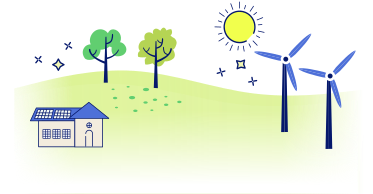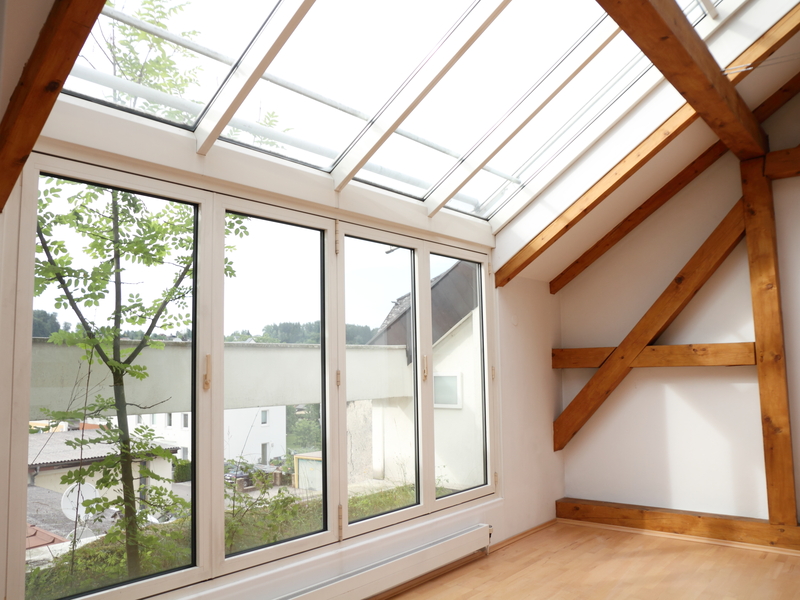This article is your complete guide to energy-efficient windows 2023. Whether you’re renovating your home or building a new one, the choice of windows can significantly impact both the look and energy efficiency of your home. That’s where energy-efficient windows come into the picture, which is a fantastic way to reduce energy costs and create a comfortable home environment. This blog post aims to help homeowners understand what energy-efficient windows are, how they work, and why they are essential. So, if you want to learn more about windows energy efficient 2023, keep reading!
Here at The Energy Professor, we want to give you the information you need to not only save money on your energy bill, but to also become more energy efficient. We hope find this post helpful! And makes it easier for you to know more about appliance energy usage. Be sure to also check out our one of a kind energy savings calculator!
The Energy Professor Electricity Rate Check Tool
What are Energy Efficient Windows?

Energy-efficient windows, as the name implies, are designed to prevent your heated or cooled air from escaping your home. Their increased insulation reduces the energy needed for heating and cooling, which means lower costs for you, and reduced impact on the environment. Most energy-efficient windows have multiple panes of glass that creates an insulation barrier to help regulate the temperature in your home.
There are also other features that come with energy-efficient windows like low-emissivity coatings, which reflect infrared light and regulate your home. These energy-efficient windows also typically are made with high quality frames and seals which assist in their longevity.
Why should I install energy efficient windows?
The main reason to install energy-efficient windows is the significant savings in energy and therefore, money. These windows minimize the use of artificial cooling and heating, hence reducing your utility bills. Besides, they offer superior comfort, maintain a consistent indoor temperature, and reduce the impact on the environment by lessening carbon footprint.
Related post: Top 15 Winter Energy Saving Tips
How Do Energy-Efficient Windows Work?

Energy-efficient windows use multiple strategies to keep heat in or out of a home. They often have multiple panes of glass to insulate the window and reduce heat transfer. They might also use low-emissivity (low-E) coatings, which reflect infrared light, keeping heat inside in the winter and outside in the summer.
- Multiple Panes of Glass: By having two or more panes of glass, energy-efficient windows create an insulating barrier that reduces heat transfer. The space between the panes can be filled with air or inert gases like argon or krypton, which provide even greater insulation than air.
- Low-E Coatings: Low-emissivity (Low-E) coatings are thin, transparent layers applied to the glass that reflect infrared light. During the winter, this means that the heat inside the home is reflected back inside, keeping the home warm. In the summer, the heat from the sun is reflected outside, helping to keep the home cool.
- Gas Fillings: The space between the panes of glass can be filled with inert gases such as argon or krypton. These gases are denser than air and provide better insulation, reducing the conduction of heat through the window.
- High-Quality Frames and Seals: The materials used for the frames and seals of energy-efficient windows are chosen for their insulating properties. Vinyl, wood, or fiberglass frames, along with quality seals, caulking, and weatherstripping, prevent drafts and air leaks, ensuring that the insulating barrier is maintained.
- Glazing and Tints: Special glazing or tints can be applied to the glass to control solar heat gain. This helps manage the amount of sunlight and heat that enters the home, providing additional control over the indoor temperature.
- Design and Orientation: Energy-efficient windows can be designed and oriented to take advantage of natural sunlight and warmth in the winter, while minimizing exposure to the sun in the summer.
- U-Value and R-Value: The effectiveness of energy-efficient windows can be measured through their U-value (rate of heat transfer) and R-value (resistance to heat flow). A lower U-value and a higher R-value indicate better insulating capabilities.
By combining these features, energy-efficient windows create a thermal barrier that reduces the reliance on artificial heating and cooling. This leads to lower energy bills, a more consistent indoor temperature, and a reduction in greenhouse gas emissions. They are an essential component in creating an energy-efficient and environmentally friendly home.
How are energy-efficient windows good for the environment?
By reducing the amount of heating and cooling needed in your home, energy-efficient windows reduce the amount of energy you’re using. That means that there is less of an energy load on the power plants, which would reduce greenhouse gas emissions.
Related post: 7 Tips on How to Save Electricity in the Summer
How Do I know What Energy-Efficient Windows to Choose?

Choosing the right energy-efficient windows for your home depends on several factors such as the climate you live in, the design of your house, and your budget. You should also consider the window’s Energy Star and National Fenestration Rating Council (NFRC) ratings, which we will cover in the following section.
Tips and tricks for choosing energy-efficient windows
When choosing energy-efficient windows, consider the following tips:
- Check the Energy Star and NFRC ratings
- Consider the U-value and R-value of the window
- Look for windows with Low-E coatings
- If you live in a colder climate, consider gas-filled windows for better insulation
- Make sure the window design complements your home aesthetics
The best way to ensure you’re getting energy-efficient windows is to work with a reputable company. There are many energy-efficient window brands in the market, so do your research before making a decision. Energy-efficient windows can be a significant investment, but they can also provide substantial returns through reduced energy costs, improved comfort, and increased home value. The savings you can get from these windows make them one of the best upgrades for a smart home.
What’s the difference between Energy Star and NFRC ratings?
Energy Star is a program run by the U.S. Department of Energy and Environmental Protection Agency that signifies energy-efficient products. Windows that earn the Energy Star label have been independently tested and verified to perform at levels that meet or exceed strict energy efficiency guidelines.
On the other hand, NFRC is a non-profit organization that provides accurate information to measure and compare the energy performance of window, door, or skylight products. The NFRC label provides ratings for various energy performance characteristics, including U-value and solar heat gain coefficient.
What’s the difference between R-value and U-value?
The R-value measures the resistance to heat flow, which means a higher R-value signifies better insulating properties. The U-value measures the rate of heat transfer, meaning a lower U-value indicates better insulating capabilities. Therefore, when choosing energy-efficient windows, look for a low U-value and a high R-value.
Related post: Complete Guide on How to Lower Your Energy Bill : 8 Tricks to Reduce Your Energy Bill
Energy-Efficient Windows FAQ

Q: What are energy-efficient windows?
A: Energy-efficient windows are designed to prevent heated or cooled air from escaping from your home. They utilize increased insulation, multiple panes of glass, and low-E coatings to reduce energy needed for heating and cooling.
Q: Why should I install energy-efficient windows?
A: Installing energy-efficient windows helps in significant savings on energy and money, reduces your carbon footprint, and maintains a consistent indoor temperature.
Q: How can I make my old windows more energy-efficient?
A: You can add window treatments or coverings, attach storm windows, use caulking and weatherstripping, or apply window films to improve efficiency.
Q: What are the environmental benefits of energy-efficient windows?
A: They lessen the load on power plants, reduce greenhouse gas emissions, and reduce the demand for non-renewable energy sources.
Do you Need Cheaper Electricity?
If you’ve taken the time to understand the information on your bill and discovered you’re paying more than you’d like for your electricity, have you looked around for a cheaper deal? The Energy Professor has a wealth of information on ways to save on your utilities, including details of top deals that could significantly reduce your monthly or quarterly electricity bills.
We hope you found this article helpful! If you are looking for ways to increase the energy efficiency and sustainability in your home be sure to take a look at all of the latest renewable energy options in your area. The Energy Professor helps residential and small business owners find qualified energy suppliers in New York, New Jersey, Pennsylvania, Texas, Ohio, Maryland, Illinois, and Massachusetts


